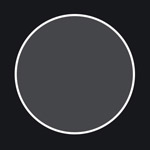Single vision lenses are lenses that have the same power across the entire surface. A plus single vision lens is convex in shape; thicker center and thinner edges and is used for correction of hyperopia commonly known as Far-sightedness, and in some cases in children to correct a small squint. Whereas a minus single vision concave lens; thinner center and thicker edges is used for myopia, which is commonly known as Near, or short-sightedness.
Single vision lenses are available in a variety of tints, coatings and various materials to minimize lens thickness and weight.If you are wearing single vision glasses for the first time, then it is quite normal for you to have to get used to them. People who are quite nearsighted, the world appears to be smaller when looking through the new glasses. They give the impression that the ground is further away and the room seems to be deeper. In contrast, wearers who are farsighted have a magnification effect with their lenses, which is just the opposite. Things appear bigger, and the ground appears to be closer. After a short while, one quickly adapts to the new way things look, and one will notice how much clearer you are able to see.
Types

Lens effectiveness
There are 3 main designs , Spherical, (like a slice cut off a soccer ball). They have a smooth even curvature which is the same across the lens surface, Toric lenses have a curvature that has two principle meridians, a flatter one, and perpendicular to that, a steeper one. So it would have a maximum and a minimum curvature. To visualize this one can think of slice cut from a rugby ball where the curvature along the length of the ball is flatter than the curvature around the middle part of the ball. These are the lenses that are used to correct astigmatism. Aspherical lenses which have a slightly flatter curvature toward the edges.
Aspheric lenses are often used for Spectacle lenses Aspheric lenses allow for crisper vision than standard spherical lenses, mostly when looking in other directions than the lens optical centre. Moreover, the reduction of the magnification effect of a lens may help with prescriptions that have different powers in the 2 eyes. Not related to the optical quality, they may give a thinner lens, and also distort the viewer's eyes less as seen by other people, producing better aesthetic appearance
Materials
These lenses are available in a variety of materials including Glass, and a variety of different Plastic materials with different optical properties. Barium Crown Glass is the glass that has been used for most lenses ranging from microscopes, telescopes, binoculars, cameras and spectacle lenses. Higher density flint Glass is also used as it has a higher refractive index than crown glass, but due to the higher density of the material the lenses are heavier.
Technological and chemical advancements have produced Plastic materials that are well suited to spectacle lenses The plastic material most commonly used is known as CR39 ( "Columbia Resin 39"). It is a thermal-cured plastic developed in the early 1940s.CR-39 plastic remains a popular material for spectacle lenses because of its light weight (about half the weight of glass), low cost and excellent optical qualities.
Polycarbonate Material developed in the early 1970s, is also used due to its incredible impact resistance. Polycarbonate lenses became increasing popular and remain so today. This material is used for helmet visors for the Air Force, for "bulletproof glass" for banks and other safety applications, polycarbonate is lighter and significantly more impact-resistant than CR-39 plastic, making it a good material for children's eyewear, safety glasses and sports eyewear.A newer lightweight lens material with similar impact-resistant properties as polycarbonate called Trivex was introduced for eyewear in 2001. The advantage of this material is its superior optical properties compared to polycarbonate.
Refractive Index

Samples of various lens densities
The refractive index of lenses refers to the light bending properties of the specific material. The more “dense” the material, the higher the refractive index. For example, Air has a refractive index of 1. And pure water has a refractive index of 1.33, and the densest clear material known to man is a diamond, which has a refractive index of 2.4. the higher refractive index also means the specific material reflects light more, as the light cannot enter it easily due to the increased density of the material, that is why diamonds “sparkle” as they do because they reflect the light more. The Refractive index of Glass ranges from 1.53, to 1.9.
The Flint Glass which has the higher refractive index Is heavier than normal glass due to the higher specific gravity of the material. In Plastic, the refractive index ranges from 1.498 (CR-39 plastic) to 1.74 (a specific variety of high-index plastic). So, for the same prescription power and lens design, a lens made of CR-39 plastic will be the thickest lens available, and a 1.9 high-index glass lens will be the thinnest. The higher index lenses on the downside tend to reflect light more, and for this reason it is essential to treat the surfaces of these lenses with an Anti-reflective coating.
Tints
Tints of virtually any color can be applied to lenses. Lighter, fashion tints are often used for cosmetic purposes to enhance a wearer's looks. Darker tints allow the wearer to use the lenses as sunglasses. Color can be added to a lens as a solid tint, where the entire lens has the same color density, or as a gradient tint, where the color density is darkest at the top of the lens and gradually fades to clear or nearly clear at the bottom.
Different colors can be applied to lenses for different purposes. Yellow is often added to a lens to enhance contrast, especially in overcast conditions, making it a popular tint for hunters and for driving at night, but specifically during the twilight times just after sunset, and just before sunrise. Green, Green/grey, Grey, and Brown tints used in varying densities depending on user preference, are the most popular for sunglasses. Various slight shades are sometimes added to lenses where the user needs them for a specific purpose. Some users find relief from a slight tint when working in an office, specifically when using a computer most of the day.
Coatings
Cumulative exposure to the sun's harmful ultraviolet (UV) radiation over a person's lifetime has been associated with age-related eye problems including cataracts and macular degeneration. For this reason, people should protect their eyes from UV beginning in early childhood.
An ultraviolet protective coating can be applied to plastic lenses to block out the harmful Ultraviolet rays. Polycarbonate and nearly all high-index plastic lenses have 100 percent UV protection built-in, due to absorptive characteristics of the lens material. Anti-reflective coating (also called "AR coating" or "anti-glare coating") improves vision, reduces eye strain and makes your spectacles look more attractive. These benefits are due to the ability of AR coating to virtually eliminate reflections from the front and back surfaces of your lenses. With reflections gone, more light passes through your lenses to optimize your vision with fewer reflections and ghost images (especially at night), the lenses look nearly invisible.
Apart from the optical benefits, this enhances your appearance by drawing more attention to your eyes and helping you make better "eye contact" with others. All lightweight plastic lens materials have surfaces that are significantly softer and more prone to scratches and abrasions than glass lenses. Polycarbonate is the softest lens material, but is also the most impact-resistant. All plastic and high-index plastic lenses require a factory-applied anti-scratch coating for adequate lens durability. Most of today's modern anti-scratch coatings (also called scratch coats or hard coats) can make your lenses nearly as scratch-resistant as glass.


